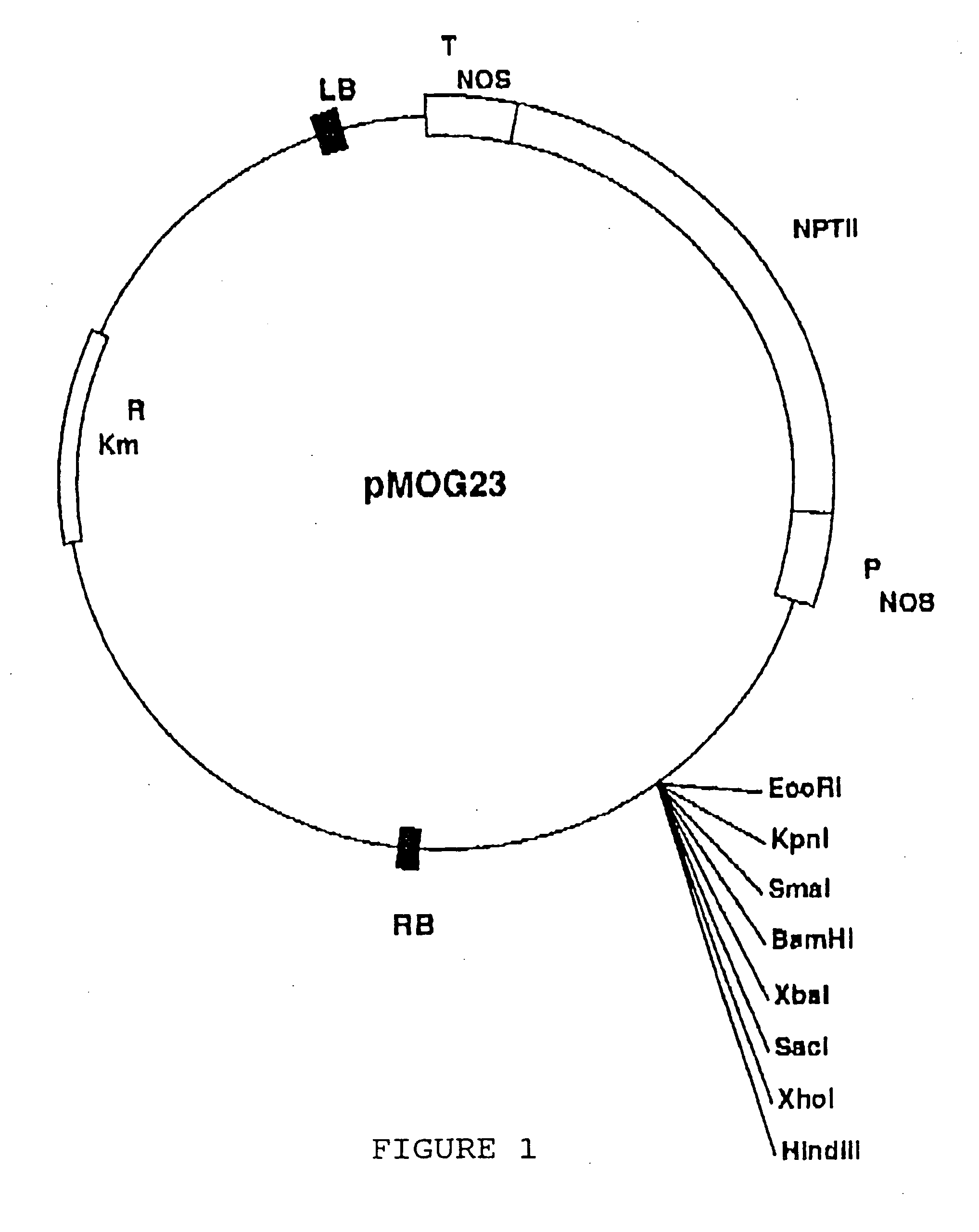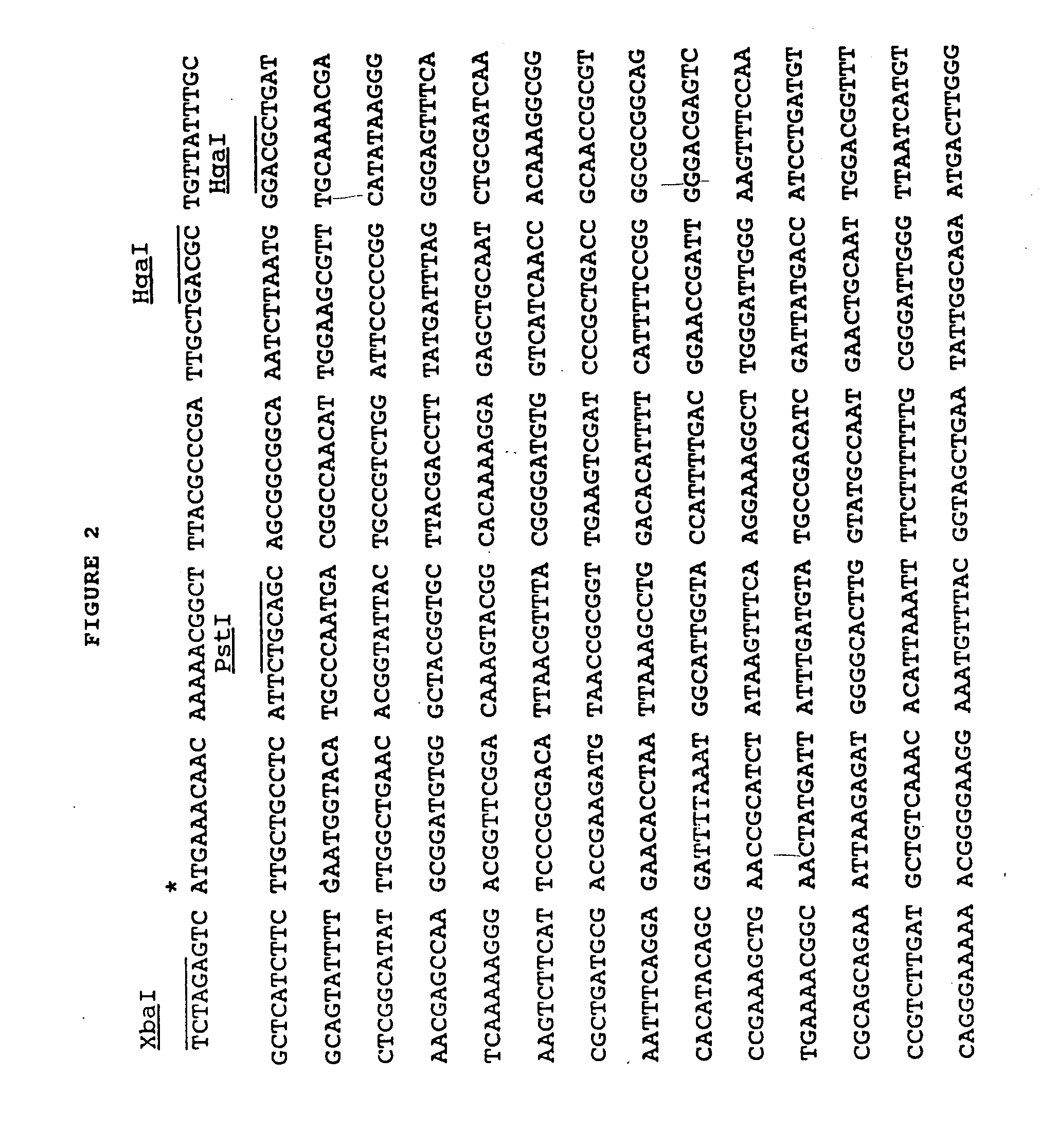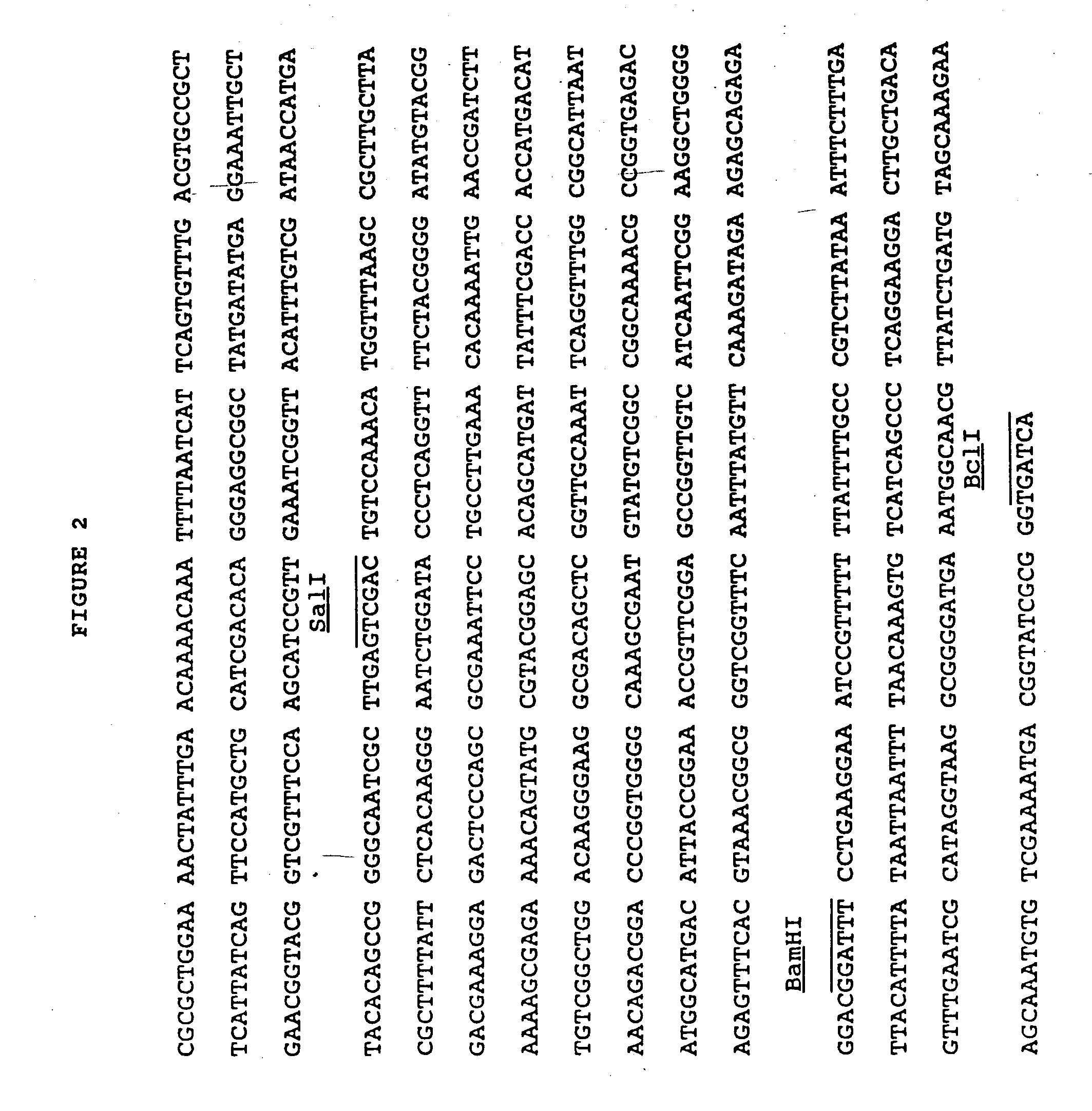Transgenic plants having a modified carbohydrate content
a technology of modified carbohydrate and plant, which is applied in the field of development of transgenic plants having a modified carbohydrate composition, can solve the problems of introducing highly undesired characteristics, laborious and time-consuming methods, and loss of other desired characteristics, and achieves reduced potato -amylase activity, reduced starch degradation, and high potato -amylase activity.
- Summary
- Abstract
- Description
- Claims
- Application Information
AI Technical Summary
Benefits of technology
Problems solved by technology
Method used
Image
Examples
example 1
Construction of the Binary Vector pMOG23.
[0077] The binary vector pMOG23 (deposited at the Centraal Bureau voor Schimmelcultures, Baarn, The Netherlands, on Jan. 29, 1990, under accession number CBS 102.90; shown in FIG. 1) is a derivative of vector Bin19 (Bevan, 1984). First, the positions of the left border (LB) and the right border (RB) were interchanged with reference to the neomycin phosphotransferase gene II (NPTII gene). Secondly, the orientation of the NPTII gene was reversed giving transcription in the direction of LB. Finally, the polylinker of Bin19 was replaced by a polylinker having the following restriction enzyme recognition sites: EcoRI, KpnI, SmaI, BamHI, XbaI, SacI, XhoI, and HindIII.
example 2
Cloning of the α-Amylase Gene of Bacillus licheniformis
[0078] All transformations in this example were performed in E. coli strain DH5α.
a. Tailoring of the α-Amylase Gene of Bacillus licheniformis
[0079] The α-amylase gene (FIG. 2) from Bacillus licheniformis is present in the Bacillus vector pPROM54, which is described in European Patent Application 224,294, the disclosure of which is hereby incorporated by reference. The plasmid pPROM54 has been deposited at the Centraal Bureau voor Schimmelcultures, Baarn, The Netherlands on Nov. 5, 1985, under accession number CBS 696.85.
[0080] The plasmid pPROM54 was digested with XbaI and BclI. The XbaI / BclI fragment was cloned in plasmid pUC18 digested with XbaI and BamHI, resulting in plasmid pMOG318. A SalI / BamHI fragment was synthesized with pMOG318 as a template with PCR technology, creating the BamHI site by use of a mismatch primer (the position of the created BamHI site is indicated in FIG. 2). The SalI / BamHI PCR fragment was clone...
example 3
Transformation of Tobacco
[0087] Tobacco (Nicotiana tabacum cv. Petit Havanna SR 1) was transformed by co-cultivation of plant leaf disks (Horsch et al., 1985) with Agrobacterium tumefaciens, containing the binary vector pMOG228 with the α-amylase gene. Transgenic plants were selected on kanamycin resistance. The transgenic plants were assayed for activity of the enzyme of interest. Plants expressing the α-amylase gene were analyzed more thoroughly and used in further experiments.
[0088] Leaf discs of about 5×5 mm were cut from leaves of axenically grown plants of Nicotiana tabacum cv. Petit Havanna SR1. The discs were floated for 20 minutes in MS-medium (Murashige & Skoog, 1962) containing 30 g / L sucrose with 1% (v / v) of a culture of Agrobacterium tumefaciens LBA4404(pMOG228) (10 cells / ml). Subsequently, the discs were briefly dried on filter paper and transferred to plates containing solid medium consisting of MS-medium, containing 30 g / L. sucrose, 7 g / L agar, 1 mg / L kinetin and 0...
PUM
| Property | Measurement | Unit |
|---|---|---|
| Electrical conductance | aaaaa | aaaaa |
| Composition | aaaaa | aaaaa |
| Content | aaaaa | aaaaa |
Abstract
Description
Claims
Application Information
 Login to View More
Login to View More - R&D
- Intellectual Property
- Life Sciences
- Materials
- Tech Scout
- Unparalleled Data Quality
- Higher Quality Content
- 60% Fewer Hallucinations
Browse by: Latest US Patents, China's latest patents, Technical Efficacy Thesaurus, Application Domain, Technology Topic, Popular Technical Reports.
© 2025 PatSnap. All rights reserved.Legal|Privacy policy|Modern Slavery Act Transparency Statement|Sitemap|About US| Contact US: help@patsnap.com



